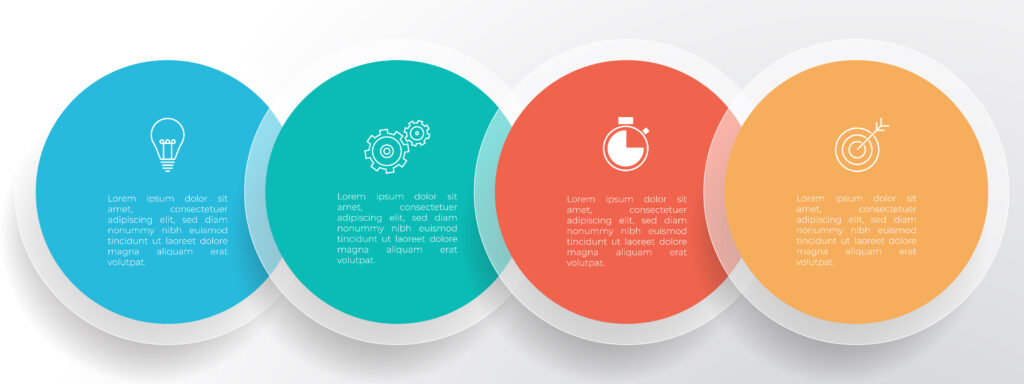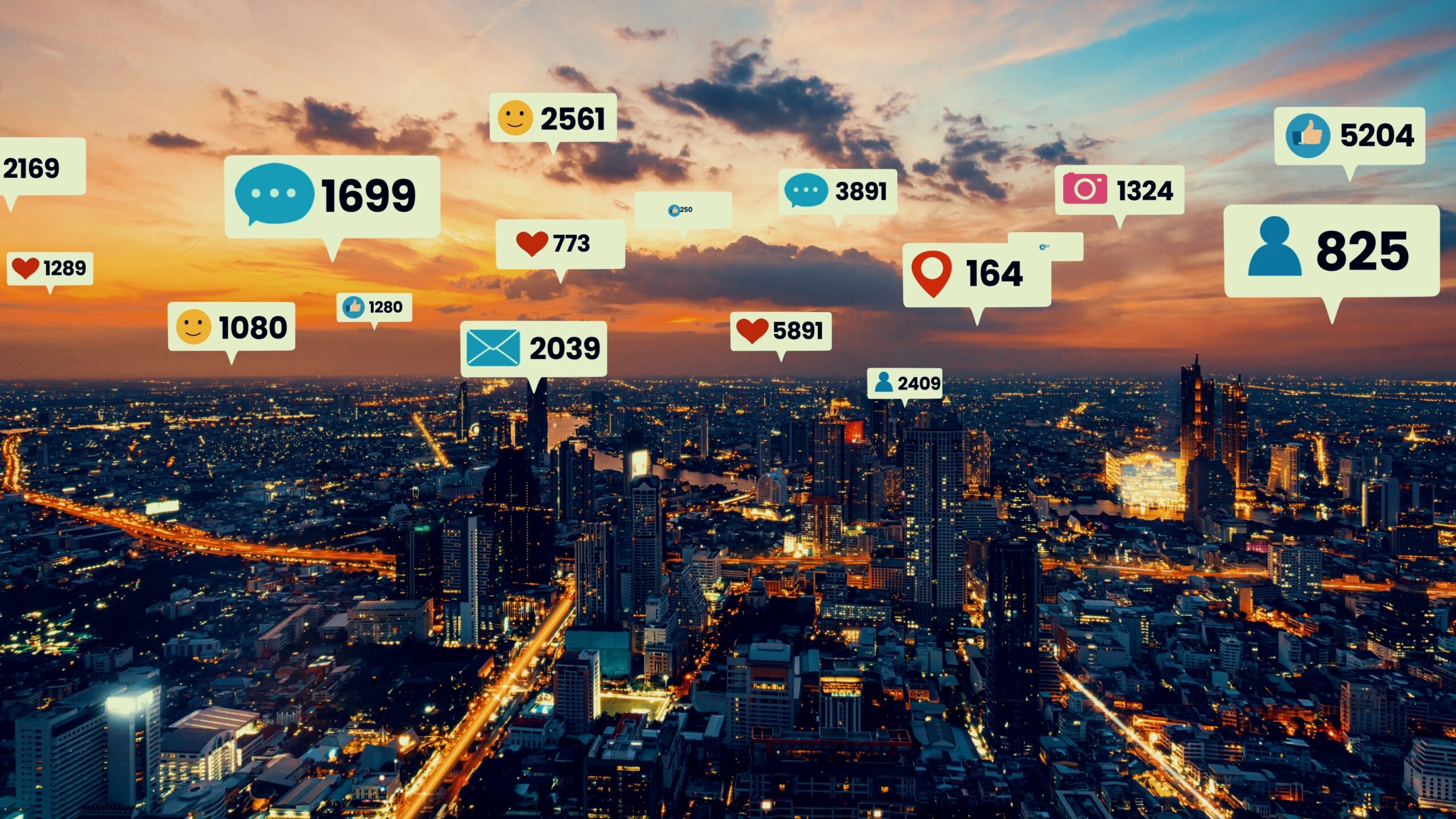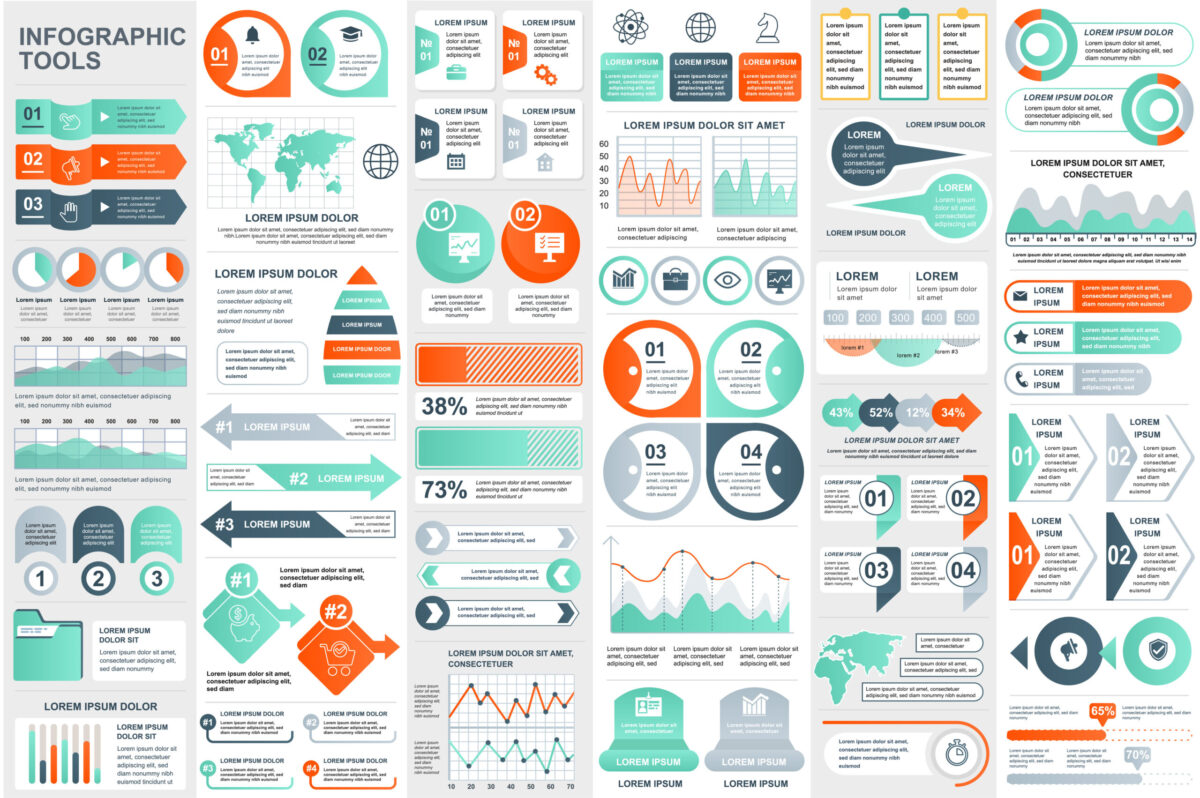Here’s the hard truth about content marketing:
Many in the marketing realm hold the notion that creating top-notch content is all it takes to garner attention and draw engagement. They argue, “infographics, blogs, videos – if they’re high quality, people will naturally engage.”
If only it were that simple…
To truly succeed in attracting your audience and boosting SEO rankings with infographics, you need a strategic approach to creating and promoting your visual assets.
Relying on chance is like throwing darts blindfolded – you might hit the target occasionally but it’s not an effective strategy.
Table of Contents:
- Unlocking the Potential of Infographics in Content Marketing
- Crafting Infographics That Pack a Punch
- Optimize Your Infographic Design for Engagement
- Harnessing Social Media for Infographic Promotion
- Evaluating the Success of Your Infographics
- Build Natural Backlinks with Visual Assets
- Streamline Your Processes with Automation Tools
- Conclusion
Unlocking the Potential of Infographics in Content Marketing
The influence infographics wield within content marketing is immense. These visual tools are an incredibly effective method for presenting data and information, transforming complex concepts into easily digestible visuals.
Maximizing Your Results: The Art & Science of Infographic Design
A well-executed infographic design does more than just beautify your content; it’s a powerful conduit that communicates intricate ideas and research findings. By integrating graphic elements like pie charts or bar graphs as part of your data visualization strategy, you can convey the main findings or critical takeaways from relevant data presented with clarity and precision.
This form of visual communication relies on minimal text but delivers high-impact messages. It takes complicated notions and transforms them into visually appealing representations that resonate both with those who prefer hard facts, as well as those drawn to creative interpretations.

To craft an outstanding infographic, one that not only grabs attention but also encourages sharing across social media platforms, consider using interactive infographics during the design process. Smashing Magazine serves up some valuable tips on creating compelling interactive designs.
Data Accuracy: A Non-Negotiable Factor in Developing Infographics
Maintaining impeccable accuracy when developing infographics is paramount. Any misrepresentation could potentially tarnish your credibility among health professionals or other demographics reliant upon precise statistics for informed decision-making processes.
You must strive to depict each key figure accurately by conducting meticulous calculations before converting these numbers into graphic elements embedded within your infographic design.
Including reliable sources bolsters trust while increasing opportunities for natural backlinks, particularly if reputable organizations opt to share meticulously crafted visuals containing valid insights derived from their studies or reports.
Infographics are a powerhouse in content marketing, turning complex data into easily digestible visuals. A well-designed infographic not only enhances your content but also conveys intricate ideas with clarity and precision. However, accuracy is key – any errors can damage credibility and trustworthiness. When done right, infographics can boost engagement and generate natural backlinks.
Crafting Infographics That Pack a Punch
The next step is to make infographics that don’t just convey your narrative but do so in a way that will have an enduring impression on the viewer.
Identify Key Takeaways Clearly
Your first step in creating a great infographic design should be defining clear key takeaways. The main findings of your research will serve as the cornerstone for this visual content creation process.
A narrative structure that resonates with viewers and leads them logically through the presented information can make all the difference between a good and effective infographic. This delicate balance between minimal text and impactful visuals forms part of the strategic content strategy you need to master.
Pick Your Colors Wisely

Graphic elements, such as color schemes, play crucial roles when designing interactive infographics. Contrasting colors highlight important data points or key figures within your infographic, effectively grabbing viewer attention.
Selecting Suitable Data Visualization Tools
Data visualization tools like bar graphs, pie charts, or other types of visual representation can greatly enhance how audiences perceive the presented information in your work. Consider which tool best represents complexity while being easily understood by large audiences during the decision-making process. Interactive graphics offer another level of engagement, allowing users to explore more intimately through clickable motion, making exploration fun.
Maintain Consistency In the Design Process
To ensure a smooth user experience, typography and graphical style must remain consistent throughout each element layout, as inconsistency may confuse readers and distract them from vital details.
Last but not least: proofread. Errors undermine credibility; always double-check before publishing online, where mistakes could potentially harm brand reputation if left unchecked.
Creating powerful infographics involves clear takeaways, a compelling narrative structure, wise color choices, suitable data visualization tools, and design consistency. Always proofread to maintain credibility. Remember – it’s not just about presenting information; it’s about leaving an indelible mark.
Optimize Your Infographic Design for Engagement
Your next mission? Take your infographic design and elevate it to the stratosphere.
Aim For Clarity with Visual Representation
When crafting infographics, remember this golden rule – visual abstracts are king. They transform raw data points into easily understood nuggets of information. An effective infographic is like a bar graph or pie chart on steroids; each key figure or relevant data point gets its own unique visual form that communicates the main findings in an instant.
You want to create great infographics where visuals do most of the talking and text plays second fiddle.

The best kind of content speaks volumes without saying much at all. This couldn’t be truer when creating infographics. The goal here is clear communication through graphic elements rather than lengthy blocks of text which can deter engagement levels significantly.
So, keep things simple yet informative with minimal text usage while maximizing impact via strong graphic design components.
Remember, you’re not just presenting data but telling a story too, so make sure every element used contributes positively towards achieving this end result.
Colors, fonts – these aren’t mere embellishments but powerful tools capable of evoking specific emotions from viewers, thereby enhancing their overall experience.
Your task here isn’t simply designing interactive infographics but captivating pieces that will get shared across social media platforms, boosting visibility even further.
This process might seem daunting initially; however, once mastered, it’ll undoubtedly yield impressive results.
Make no mistake about it though – optimizing your infographic design doesn’t mean slapping together some fancy graphics onto any old piece of content and then calling it a day.
It’s about understanding what works best within the context given audience preferences, brand identity, etc., and implementing those insights effectively throughout the entire creation journey right up until the final product goes live online, ready to be consumed by eager audiences everywhere.
Infographics are visual powerhouses that turn data into digestible nuggets of information. They’re not just about slapping on pretty graphics, but strategically using design elements to tell a compelling story. Aim for clarity, minimal text, and strong visuals to create engaging content that gets shared across social media platforms.
Harnessing Social Media for Infographic Promotion
Your next move? Capitalize on the power of social media to amplify the reach of your infographic.

Select Appropriate Platforms
Pick out where you’ll share based on your target audience and platform characteristics. For instance, LinkedIn is more suitable for reaching health professionals, while Instagram or Pinterest are ideal platforms for sharing interactive infographics due to their visual-centric nature.
Create Engaging Posts
A successful promotion isn’t just about posting; it requires a compelling caption that draws attention to key points in the infographic or raises questions related to its content. Incorporate relevant hashtags into posts as well – they’re vital tools for making your content discoverable by those interested in topics like data visualization and graphic design.
Schedule at Peak Times
To achieve maximum visibility, schedule posts during times when most followers are active online. Sprout Social’s guide offers insights into optimal post timings across various social media platforms based on user activity patterns.
Beyond publishing an engaging post with minimal text yet visually rich information presented effectively via pie charts, bar graphs, etc., take time to respond promptly to comments from users who interacted with them. Encourage further discussion around the main findings within these visual abstracts, which can foster stronger relationships and increase the chances of additional shares, ultimately leading to wider exposure for both the brand name and the linkable asset.
Evaluating the Success of Your Infographics
The effectiveness of your infographics isn’t determined at the conclusion of the design process. It’s a continuous cycle that involves evaluating their performance and making necessary adjustments.

Digging into Data Points
Your first task is to track relevant data, such as page views, social shares, or backlinks generated by your infographic. Tools like Google Analytics can help you gather these key figures in an easily understood format.
You should also monitor user engagement metrics like bounce rate and time spent on the page. These will provide insights into how engaging viewers find your visual content.
Gauging User Engagement
User interaction with your infographics reveals valuable information about its level of success. If users spend more time exploring data presented visually than reading text-based posts, it indicates they prefer this form of visual communication. This preference for graphic elements over minimal text might be something worth considering during future infographic designs.
In addition to quantitative measures, qualitative feedback from comments or surveys can offer insight into what aspects resonate most with viewers – whether it’s bar graphs representing main findings or pie charts highlighting key takeaways.
Making Adjustments Based on Findings
If certain design elements aren’t resonating with audiences despite being part of great infographic development, consider experimenting with different styles next time while creating infographics. If there’s low interaction even after employing effective infographic promotion strategies, then perhaps revise the promotional strategy by leveraging other social media platforms better suited for sharing visual abstracts.
Remember always that successful marketing requires regular evaluation followed by strategic changes where needed based on research findings. Note: An efficient way to maximize efficiency and reduce costs is to learn from past performances, thereby improving upon areas needing improvement and ensuring higher engagement in future endeavors.
Don’t just design and ditch your infographics. Keep tabs on their performance, dig into the data, and tweak as needed. User engagement is a goldmine of info – it tells you what’s hitting home and what’s missing the mark. Remember: marketing success lies in constant evaluation and strategic adjustments.
Build Natural Backlinks with Visual Assets
The power of visual content like infographics in the realm of SEO is undeniable. Not only do they make complex data easily understood, but these graphic elements can also be a goldmine for generating natural backlinks.

Crafting Infographics that Attract Links
To create an infographic design that pulls in those coveted backlinks, you’ll need to begin by exploring data points relevant to your audience. The information presented should add value and provoke interest or surprise.
Your design process will have a significant role too. A visually striking infographic has the potential to captivate viewers and draw them into your content – think engaging bar graphs or pie charts for effective data visualization while maintaining simplicity as a key figure here.
Promoting Your Infographic Strategically
After creating great infographics developed meticulously from research findings, it’s time now for strategic promotion on social media platforms where your target demographic resides most frequently.
You could write blog posts highlighting the main findings and embed this visual abstract within such articles – known as the “guestographic” strategy which encourages readers who appreciate what was shared to link naturally because their own audiences might benefit from it too.
Analyzing Performance & Adjusting Strategy Accordingly
Achieving success isn’t about just one successful piece – it’s about continually analyzing performance so adjustments can be made moving forward based on what worked best before. Using tools like Google Analytics allows tracking how many visitors came through each specific source (like Facebook vs LinkedIn), providing insight into where most engagement occurs, hence allowing you to focus more resources there next time around.
Streamline Your Processes with Automation Tools
Your final step is to take advantage of automation tools and significantly enhance your efficiency while reducing costs.
The Power of Automation in Infographic Design
By leveraging automated tools, infographic design can become a powerful tool for streamlining tasks, both improving productivity and freeing up time to focus on creative elements like data visualization. They simplify tasks, increase productivity, and allow you more time for creative endeavors like visual content creation or data visualization. Imagine having software that collects relevant data points or generates graphic elements automatically – this isn’t science fiction; it’s happening now.

A notable example here would be Canva which provides pre-designed templates for creating great infographics using minimal text but maximum impact through its visual representation capabilities such as bar graphs and pie charts.
Social media platforms are vital players when promoting your effective infographic strategy. But manually posting across multiple channels? That’s old school. Instead, social media management tools streamline this process by allowing scheduled posts at optimal times on different platforms.
Take Buffer as an instance – It not only schedules but also tracks analytics so you get insights into how well-received your infographics were among audiences.
Evaluating interactive infographics’ performance requires detailed analysis – yet another area where automation comes in handy. Consider Google Analytics; it offers comprehensive reports on user interactions with visuals including click-through rates (CTR), bounce rates, etc. These metrics indicate if users find value in the information presented within these visually appealing assets, thus helping improve future designs exponentially over time.
Conclusion
Infographics are a powerful weapon in the arsenal of content marketing, as their visual attraction and capacity to communicate intricate information succinctly make them an invaluable asset for any business.
Crafting quality infographics requires strategic planning, creativity, and attention to detail.
To maximize engagement, your design must be optimized – visually appealing, easy to understand, and packed with valuable insights.
Social media platforms can serve as excellent channels for promoting your infographics and reaching a wider audience.
Analyzing performance is key; it helps identify what’s working well and areas that need improvement.
Natural backlinks? Yes! Infographics can attract these too by providing high-quality content that others want to link to.
Automation tools come in handy here – they streamline processes while saving time and cost.
Intrigued about how you can leverage infographics more effectively? It’s time you checked out Asset Linkable.
We’re all about creating linkable assets that drive traffic and generate natural backlinks.
Click here, and let us show you how we transform ordinary into extraordinary through the power of engaging visual content with backlinks.
